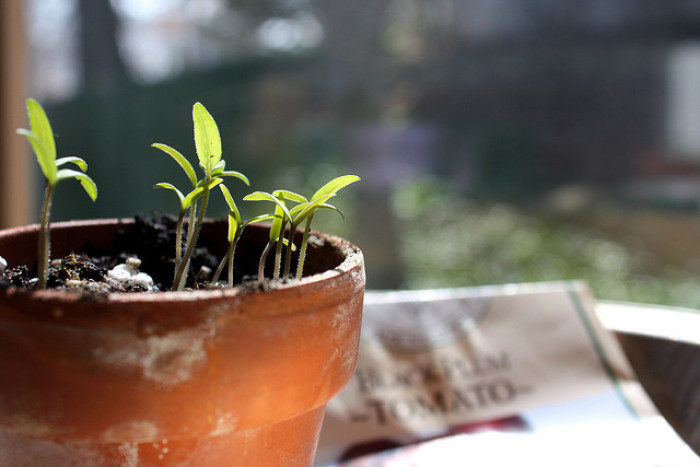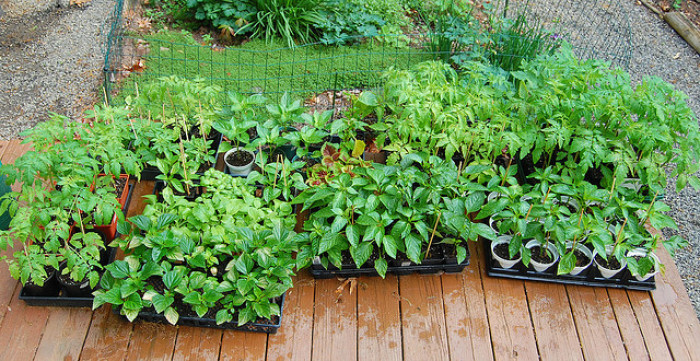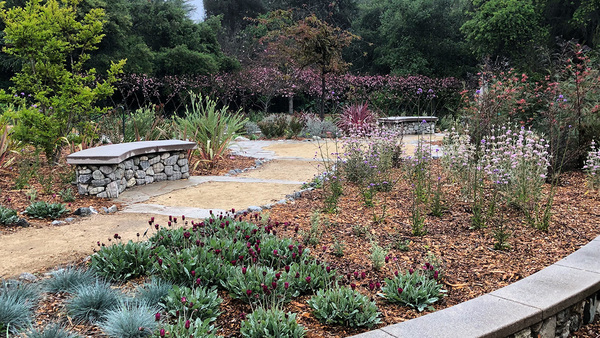
You’re all geared up to plant a fall garden — or any garden for that matter — and you’re stuck at the crossroads of planting seeds or planting starts. Here’s a checklist that will help you decide which planting path you should be going down.
Vegetable plants such as radishes, turnips, carrots, spinach, beets, and even lettuce aren’t especially thrilled to be transplanted. So I always suggest that people plant them directly into the garden bed by seed. As for the rest of them — you’ve got choices, my friend.
Starting with Seeds
They can be challenging, exciting, and addicting.
Pros:
- Seeds are the most inexpensive way to plant a garden.
- They offer the most options as far as varieties considering that you can order seeds from anyone, anywhere. Seed catalogs alone are collection-worthy.
- There’s some serious pride attached to growing your vegetables from seed-to-plate.
- If you complete the circle by continually keeping the seeds from open-pollinated plants in your garden, you’ll create a vegetable strain (AKA: landrace) that thrives in your particular environment.
Cons:
- There’s a learning curve with seeds, for sure. They can be tricky (but most are not that tricky).
- Research on the seed varieties that you’re interested in growing is important with seeds. Make sure that they’re a good match for your climate and growing zone before purchasing.
- Seeds need to be planted pretty darn close to “right time” on the garden calendar. This is neccesary in order to create sturdy plants with a strong root system. Attention should be paid to the amount of weeks before (or after) the first frost, etc.
- Some seeds need special nurturing (“babying”) while their on their way to young planthood. For instance, tomato seedlings will need some moving air (such as a fan) to development well.
- You’ll need a seed germinating station indoors. This doesn’t mean specific “grow lights” (regular shop lights are fine for germinating seeds), but there usually is an initial investment of some kind.

Growing with Starts – Also known as transplants or baby plants
Of course, all garden vegetables begin with seeds. But you don’t have to start your vegetable garden with them.
Pros:
- Starts can be a welcome jumpstart as someone else did the delicate baby part for you. With starts, your garden starts of with strong baby plants that have already been hardened off or acclimated to the outdoors.
- Local nurseries carry starts that are grown spcifically for your area. So you don’t have to worry about planting a variety that doesn’t do well in your zone.
- Having strong, young plants gives you much leeway as far as correct planting times. For instance, it’s the end of September here and it’s too late to grow broccoli for my fall garden from seed. But I can grab starts from a garden center and get them in the ground tomorrow and no one would be the wiser.
- Starts are especially perfect for beginning gardeners who would like to skip the part that includes vulnerable, infant plants.
Cons:
- Starts are the most expensive way to plant a garden. Prices can vary drastically depending on where you shop.
- Your variety choices are limited to the plants sitting in the nursery or garden center.
I typically choose seeds to plant my gardens. But it just so happens that this year I’ve turned to planting some starts in my fall garden. My cauliflower, broccoli, and peas were off to a grand start when one of my family members (whom shall remain unnamed — mostly because everyone is smart enough not to confess) left the gate open.
The deer made short work of my young, cool-weather garden. I was back to square one, so I picked up some starts in the nursery and we are back in the fall garden business again.


















Comments
Log in or create an account to post a comment.
Sign up Log in